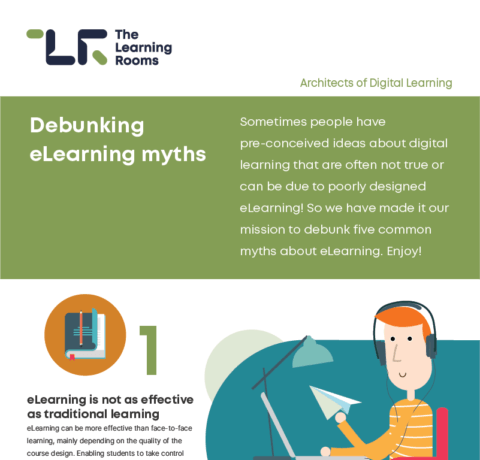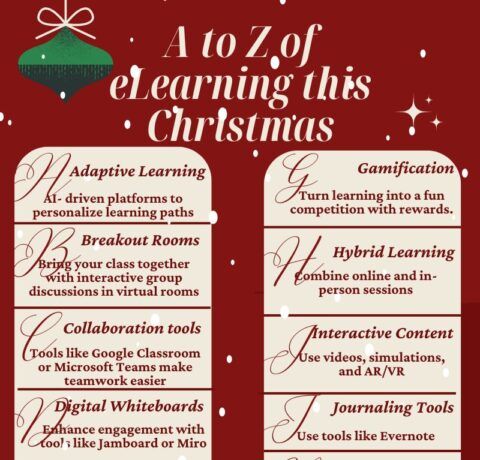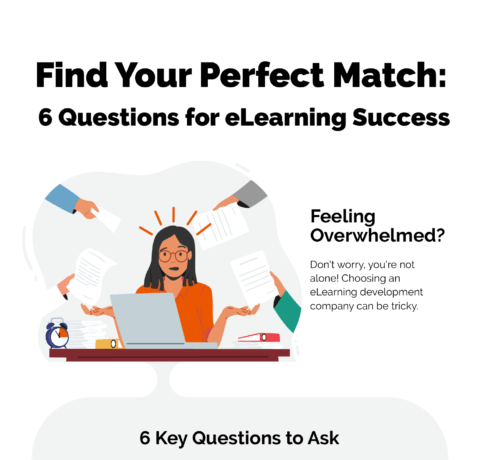10 eLearning Trends to Watch in 2016 Infographic
Being in touch with trends is crucial for anyone responsible for managing and delivering E-Learning and training within their organisation. Here are 10 key eLearning trends and foresights to watch out for in 2016.
1. Resources not courses
Courses help prepare you for the future (just-in-case) and resources support you in the moment (just-in-time). What is pushing the trend towards building resources is what we refer to as the ‘moments of need’:
- Learning something you need in the future (just in case)
- Learning something that you need now (just in time)
- Solving a problem (just in time)
A further factor that is also driving the move away from courses is the idea of microlearning or what is also referred to as bite-sized learning. Driving this is:
- Cost
- Attention span – shorter and sharper
- Time poor
- Flexibility
2. Gamification
Hardly a day goes by when we don’t hear the term gamification. 5 common mechanics used in gamification are:
- Points
- Badges
- Levels
- Leaderboards
- Challenges
Learners like to have challenges. 4 main ways to drive engagement are:
- Accelerated feedback cycles
- Clear goals and rules of play
- A compelling narrative
- Challenging but achievable tasks
Read also:
3. Explosion of devices
This particular trend has been popping up for quite some time, however mobile learning itself is still in its infancy and has yet to make a real impact in eLearning. Today though people have a multitude of different devices and they want to learn on all these devices. Although there is not a massive demand from clients at the moment for this, wearable technology will be something to consider in the future for delivery of eLearning.
Raed also: 6 Mobile Learning Trends For 2016
4. Responsive design
Responsive design is a response to delivering content on multi devices. Deciding what content to omit for smart phones is something to consider along with the capability of your learners as responsive eLearning is often a little harder to use as it requires more technical know-how than standard click next eLearning.
Read also: 7 Tips To Create Responsive Design For Mobile Learning
5. Continued rise of video
A lot of platforms today use video as their primary delivery mechanism, so missing video with resource downloads. In particular a lot of MOOC’s using video. But video has a multitude of functions.
Read also: 5 Tips To Create Engaging Video Based Learning
6. Authoring in the cloud
Cloud based authoring tools have grown steadily over the past few years. These authoring tools are mobile ready, out of the box, some are responsive, and some aren’t. As a team working together on an e-learning project, these cloud based authoring tools are really powerful when used as part of a collaborative project.
Read aslo: 7 Cloud Based Authoring Tools Compared
7. Tin Can (xAPI)
Tin Can or the experience API in some ways a ties in with accessing e-learning content on multiple devices and resources rather than courses. The notion of Tin Can is that captures all of that, so no matter what we do, whether that is download a resource or comment on a blog, this is captured as part of our learning experience and in the case or Tin Can or xAPI it is record stored and can be accessed by multiple LMS’s.
8. The new blend
The new blend of learning is not just combining traditional classroom methods and online learning, it is combining multi device learning, mixing courses with resources, different learning strategies, channels such as synchronous with asynchronous. There is a whole ream of possibilities for learning now by using a blend of technologies and channels and bringing all these things together to create a new learning experience. This is something that we will see more of in 2016.
9. Invisible LMS
Users will be looking to access learning without having to overcome any barriers of an LMS. People will be accessing learning in all different types of places, supported by Tin Can. What will be seeing more of in the future is what is referred to as the invisible LMS. It will still be tracked and reported on, but learners won’t always have to go to the corporate LMS in order to do their online learning.
10. The self-directed learner
Increasingly what we are seeing more of these days is learners wanting to take charge themselves. A lot of the technology mentioned above and approaches like resources more than courses supports this.







You can adjust your cookie preferences here.